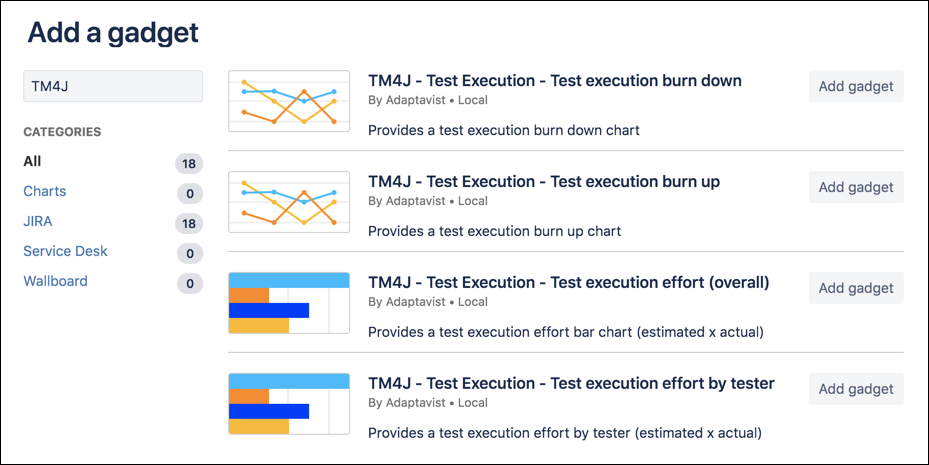Check out what’s new for Zephyr Scale Cloud in 2020. Here are the changes we document:
New Features - Brand new functionality to help you improve your testing efforts.
Updates - Changes we’ve made, large and small, that we want you to be aware of.
Bug Fixes - Issues we’ve resolved to make Zephyr Scale work as designed.
TM4J is now called Zephyr Scale!
When SmartBear added TM4J to our product portfolio earlier this spring , it brought us one more step towards our mission: help teams achieve quality throughout the entire software development lifecycle (SDLC), no matter where they’re starting from.
Putting this under the Zephyr umbrella makes it easier to determine what you need. Folding TM4J into our Zephyr product family is a natural fit.
Learn more about the name change in our blog .
In-app changes
We’ll be making some in-app changes to the name today. You’ll soon see :
Zephyr Scale in the top bar under Apps (instead of Tests )
Zephyr Scale in the Project Settings (instead of Test Management )
Zephyr Scale in the sidebar (instead of Tests )
If you have any issues accessing any documentation due to the name change, please let us know and we’ll make sure to fix them. In the meantime, we appreciate your patience while we update screenshots.
Deleting previous test executions
We've recently added an option to delete previous test executions in TM4J. This means that you can maintain a clean history of executions and ensure that reporting data is accurate (not skewed by accidental executions!).
To delete a previous test execution, all you have to do is head to the Test Player and select a test case. If you scroll down or collapse the current test execution, you'll see the history of previous executions.
Simply click on the Trash icon to delete an execution. This action is permanent, you won't be able to restore deleted test executions or their data.
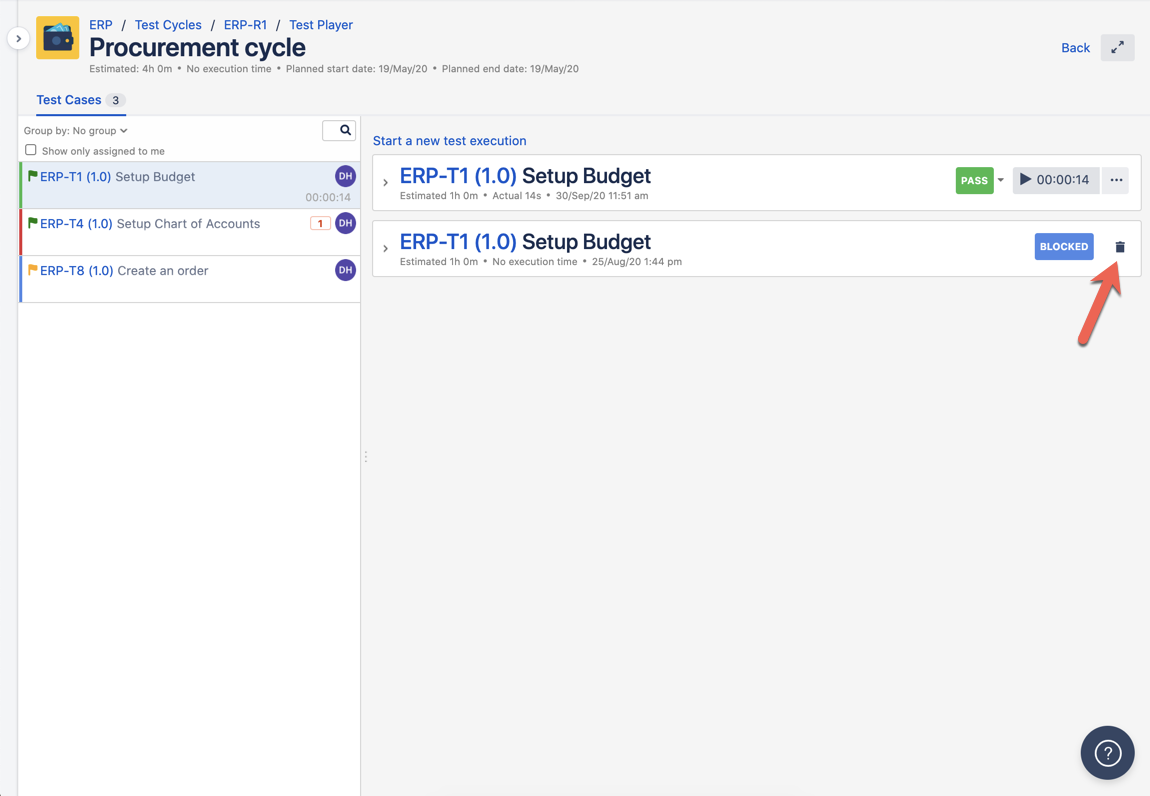
We’ve fixed a performance issue with the first page load of TM4J for instance with many projects - this should now be quicker.
We’ve fixed an issue where a custom field value in a test execution is duplicated if edited in two separate places.
You may have noticed that we’ve removed the option to import via Excel directly, and instead are asking that you import via CSV. We’ve retired this importing option due to complications with supporting Excel documents during the import process. This could often lead to performance issues that have impacted several users.
Importing via CSV solves the majority of these issues and means that we can easily maintain and solve issues in this area.
For more information on importing via CSV, see here .
Setting and retrieving custom fields via the API
Due to popular demand and being strongly aligned with our roadmap for the app, we’ve introduced the ability to set and retrieve custom field values for test cases, cycles, steps and executions via our public API.
This means that you can now pull additional information to create comprehensive reports through BI tools as well as set custom field values when executing a test via the API, and much more.
Head to our API docs to see how this looks.
New folder design!
We’ve given the folder tree a revamp so that it’s easier to use. This includes restyling the folders, giving the option to search for folders and regrouping the folder functionality so that it makes more sense.
We fixed an issue where users were unable to create test executions via the REST API if they contained parameters, test data or call-to-test test cases.
New Features
We’ve added a new filter to the test case tab! You can now find test cases that are not already in a folder by selecting the filter “Folder” and the option “None”.
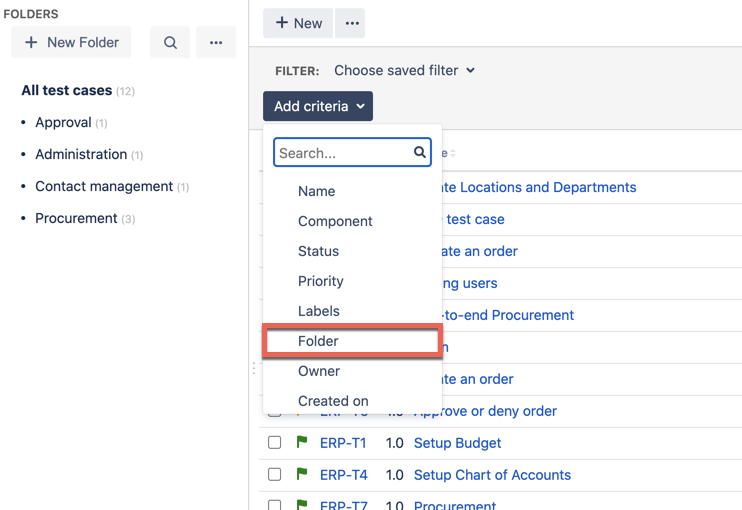
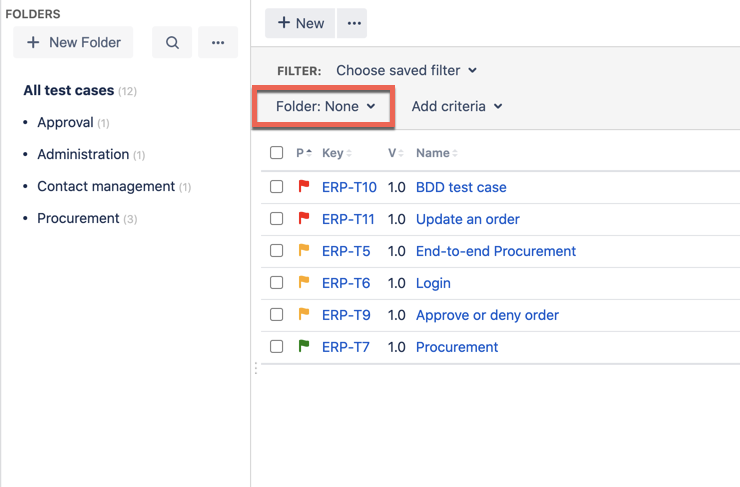
Improvements
We’ve changed the pop-up for deleting a folder to include a red button. This is to highlight the importance of this action, as the test cases will be moved back to the base folder when this happens.
We changed the size of the bars on Test Execution gadgets with a small amount of bars (they were previously very small).
We moved the Folder field in the test case view to a new line so that the whole name can be displayed.
Bug fixes
We fixed an issue where deleting a folder that no longer exists would also remove other test cases from their folders.
We’ve fixed a bug where TM4J was reloading after clicking the “New” button for a test case.
We fixed an issue with the scroll bar in the matrix reports.
New Features
Due to popular demand, we’ve introduced two new scorecard reports under the reporting section.
Test Execution Scorecard by Test Cycle
Due to popular demand, we’ve introduced two new scorecard reports under the reporting section.
This report provides a test execution results scorecard broken down by test cycle, giving you a granular view of activity for each test cycle, including:
Percentage of test executions in each status.
Percentage of test executions completed vs remaining.
A comparison between the estimated and actual effort, and the variation between the values.
The number of Jira issues that are open and closed relating to the test cycle.
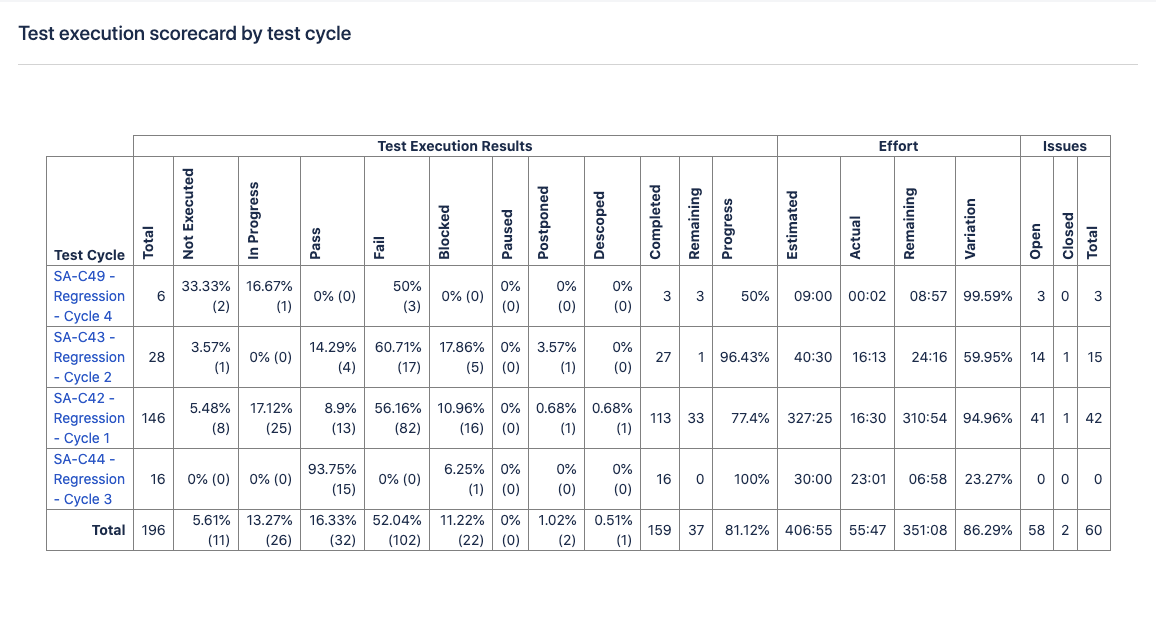
Test Execution Scorecard by Tester
This report provides a test execution results scorecard broken down by tester, giving you a granular view of activity for each tester, including:
Percentage of test executions in each status.
Percentage of test executions completed vs remaining.
A comparison between the estimated and actual effort, and the variation between the values.
The number of Jira issues that are open and closed relating to the test cycle.
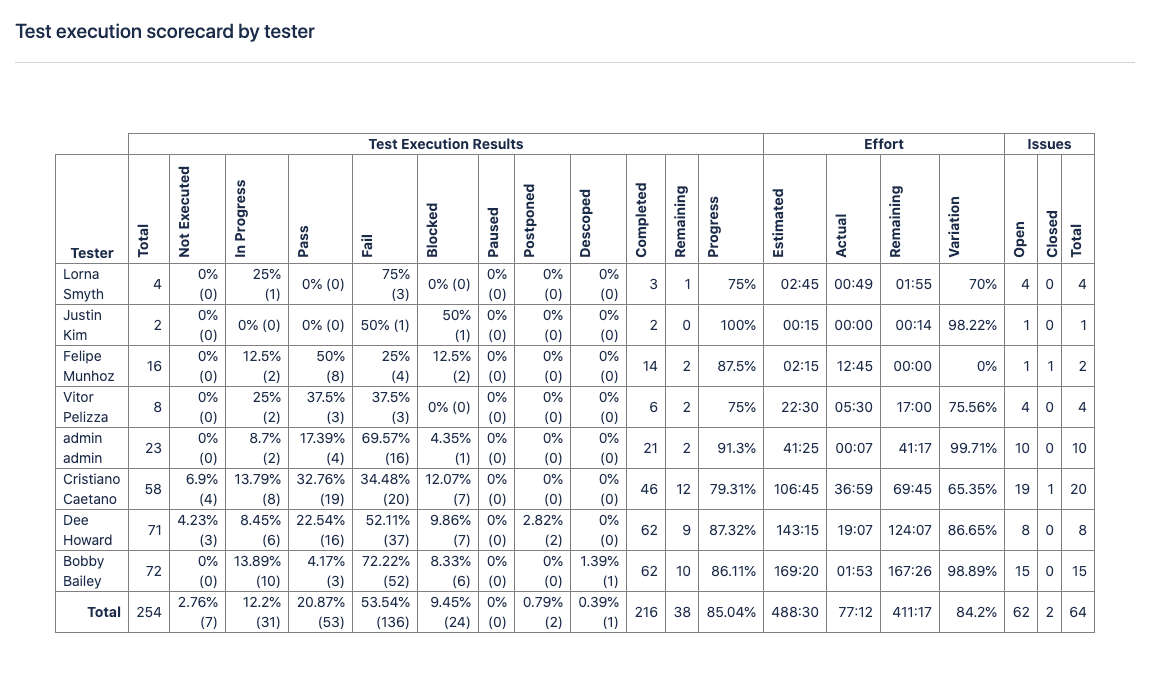
Improvements
We added tooltips to the donut report in the Test Execution Results Summary report so that you can easily see the number of executions.
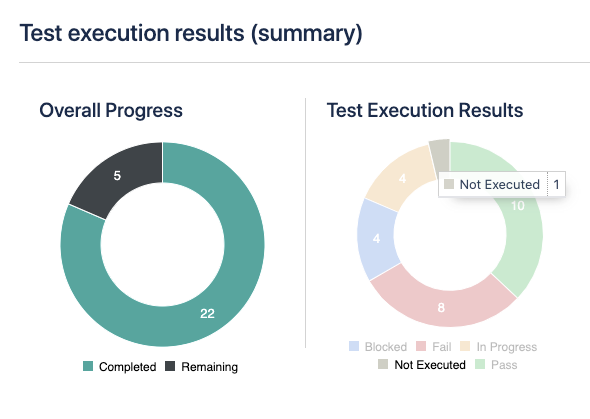
We added scrolling to the Traceability Matrix report.
Bug fixes
We fixed a bug with the Test Execution Results By Coverage report, where issue names overlapped if there were a certain number of issues included.
We fixed a bug where the gherkin syntax in the test player was not displayed correctly when using “call to test” steps.
We fixed a bug where users were unable to post the correct number of executions when using “call to test” in a test case.
Bug fixes:
We fixed an issue where the traceability matrix report was not printing any details.
We fixed an error in
/tm4j/v2/automations/executions/cucumberwhen Cucumber step had other status like skipped or pending.We fixed an issue where deleting all test case steps over multiple tabs leaved users with no steps.
We fixed an issue where the traceability report print contained invalid characters (PDF).
We fixed an issue where the new traceability report was failing with no filter selected.
We fixed an issue where the new traceability report only showed 50 issues, any others were hidden.
We fixed an issue where users were not able to delete the test case link to user story.
Bug fixes:
We fixed an issue where test cases did not load in test player sporadically.
We fixed an issue where deleted test plans still showed in reporting/gadgets.
We fixed an issue with the test execution results (detailed) report showing issues as null.
We fixed an issue where Excel export failed in Chrome.
We fixed an issue where users were not able to clone test cycle with custom field on test case steps.
Bug fixes:
We fixed an issue where the REST API returns 500 rather than 404 when making a request for a path that didn't exist.
We fixed an issue where users were unable to see more than 5 environments when performing quick execution.
We fixed an error when a test execution was looked by key (key duplicated).
We fixed an error where the test result custom field did not work in reports.
We fixed an error with creating test case via REST API using special characters.
We fixed an issue where users were unable to open test cases in Microsoft Edge.
We fixed an issue where the drag and drop for test steps inside test script wasn’t working.
Update: Removed Project Selector
Due to an increasing number of permissions issues and other irritating inconsistencies, we’ve removed the project selector. Now, if you’d like to switch projects, please use the Jira project selector.
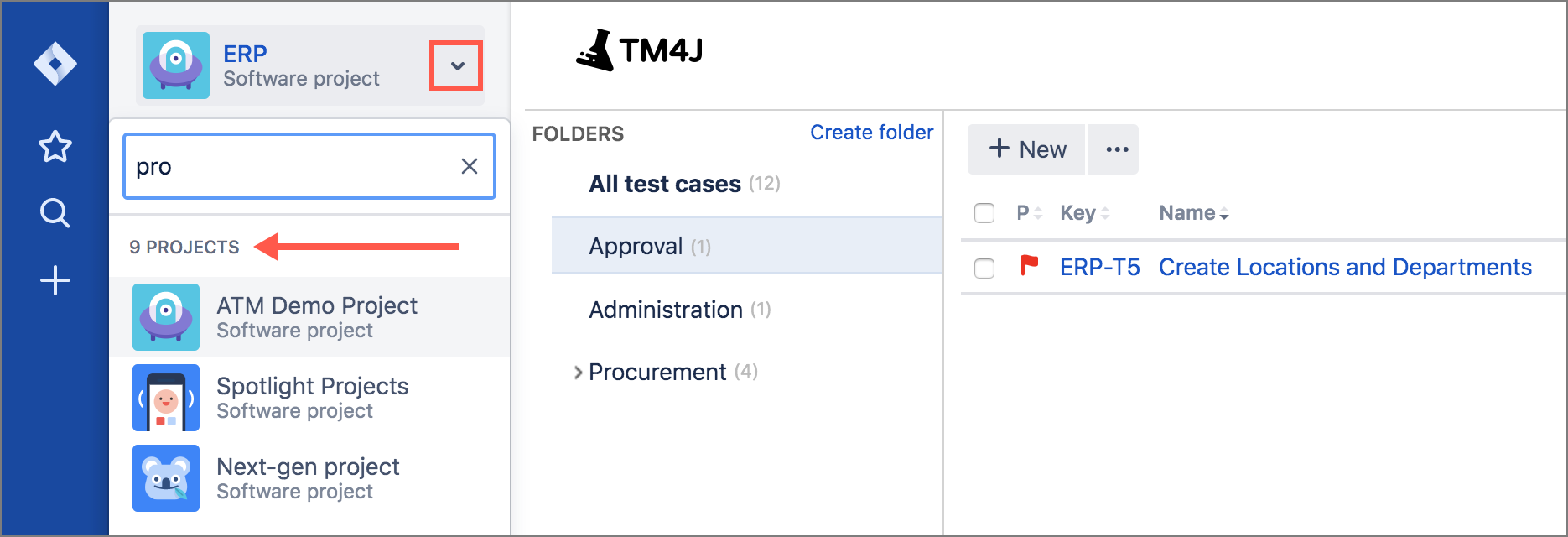
While it rarely feels good to remove such a feature, we’re confident in the change thanks to many conversations with you, our customers.
Four New Traceability Reports
Four traceability reports are now available in the primary reports section.
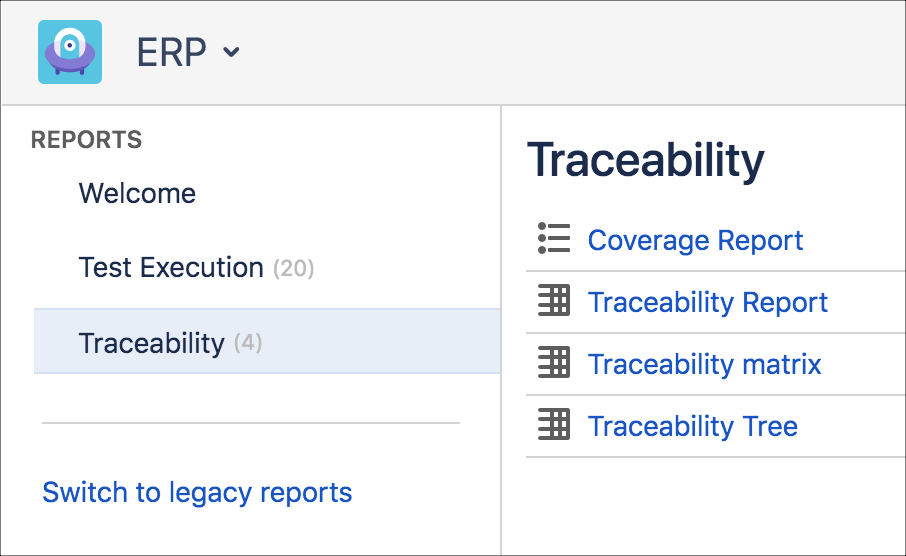
The traceability reports that were previously available as legacy reports also remain in the legacy section. However, the new reports have improved filtering and are more visually appealing.
16 New Gadgets
We added 16 new TM4J gadgets (for a new total of 18), which are now available for Jira dashboards.
